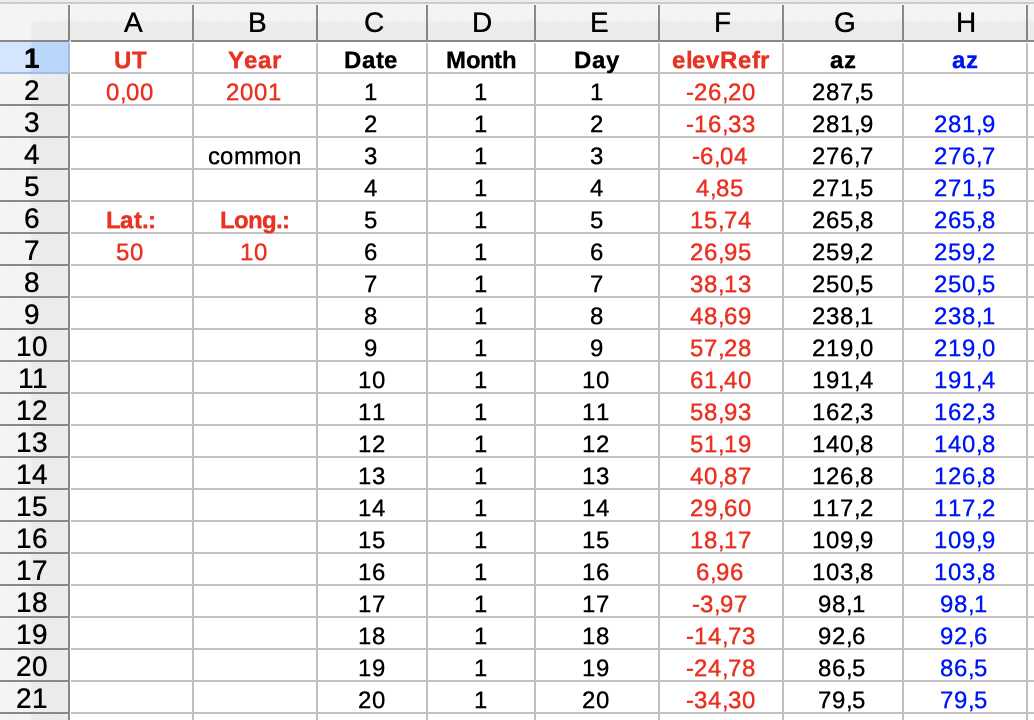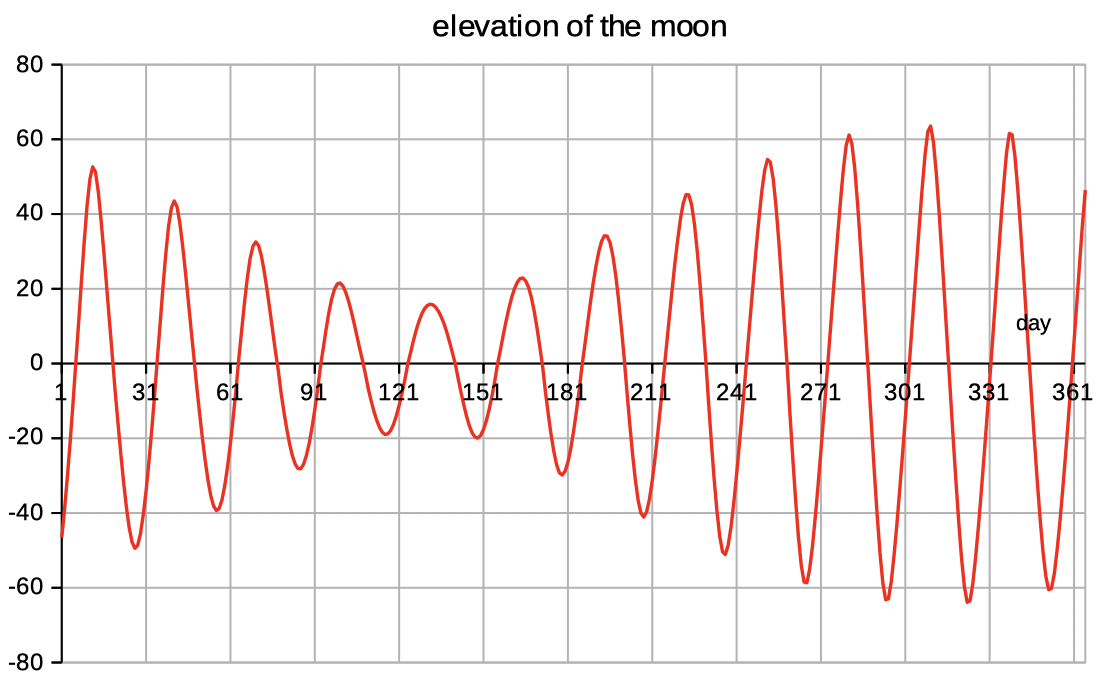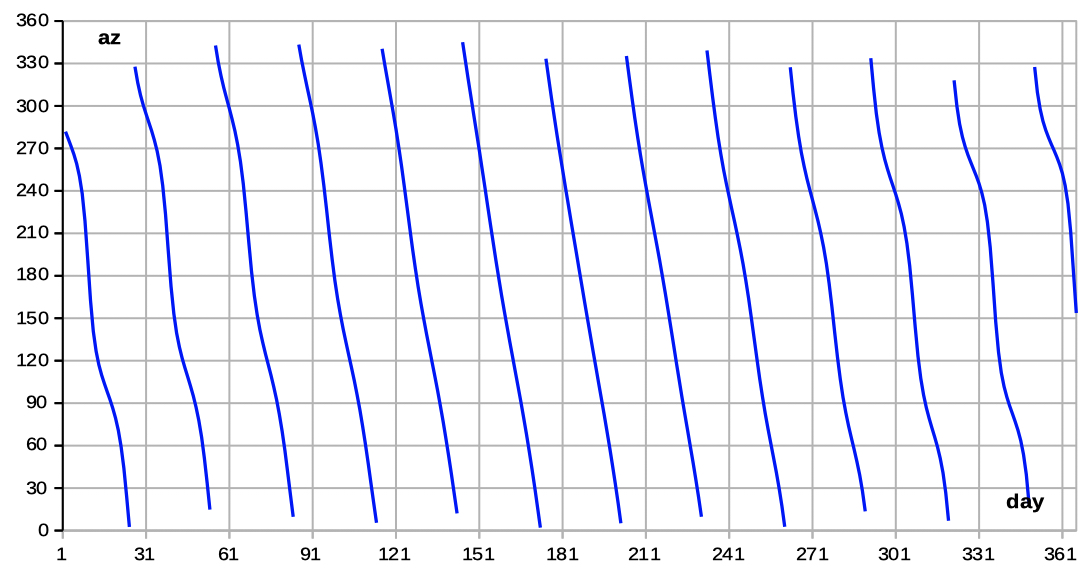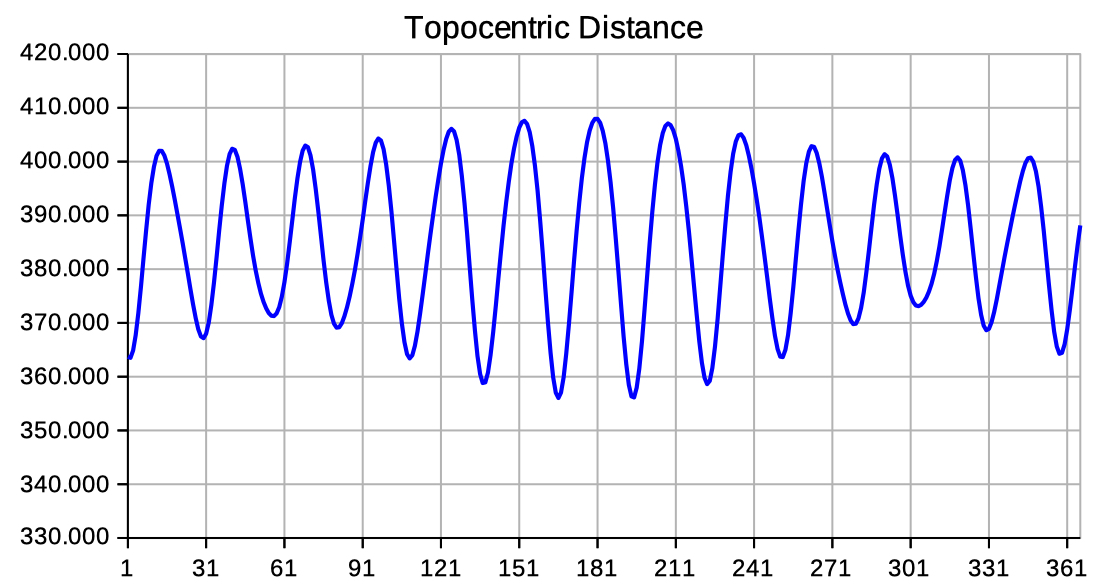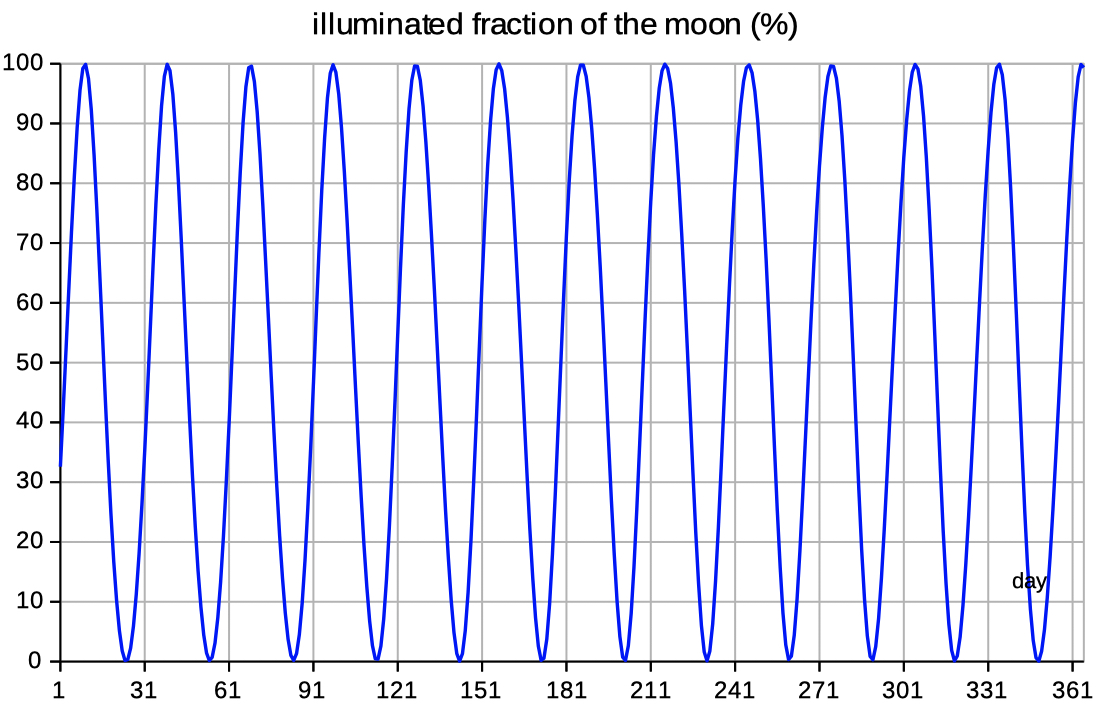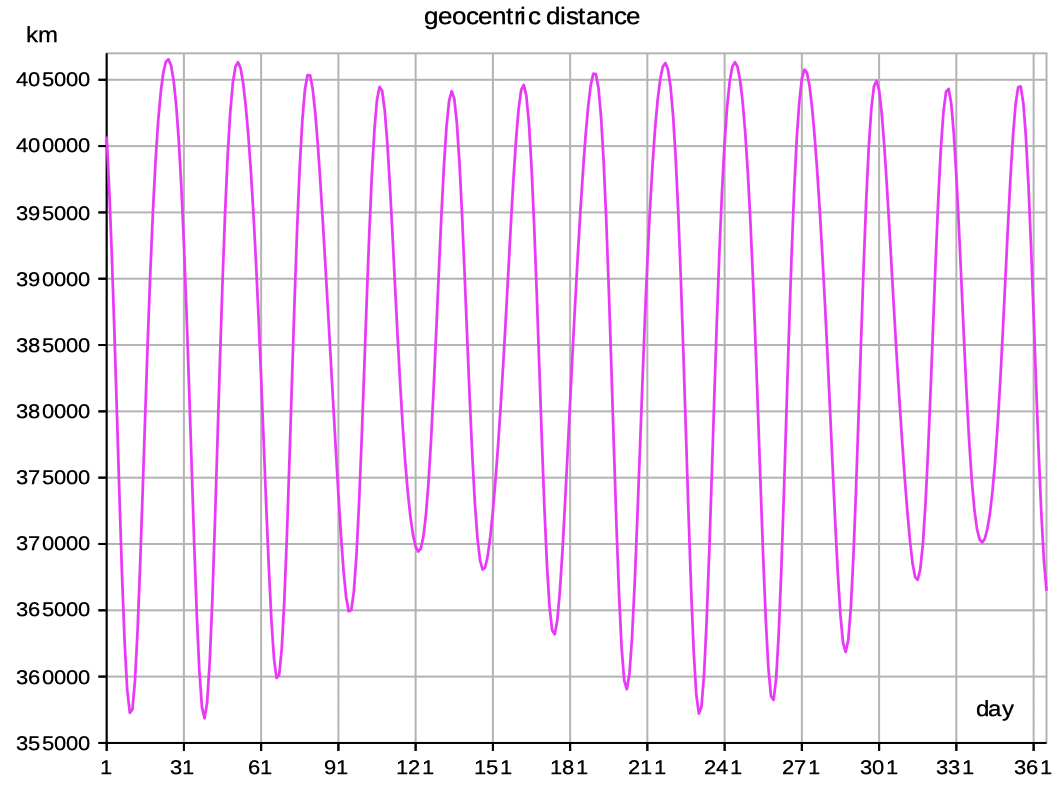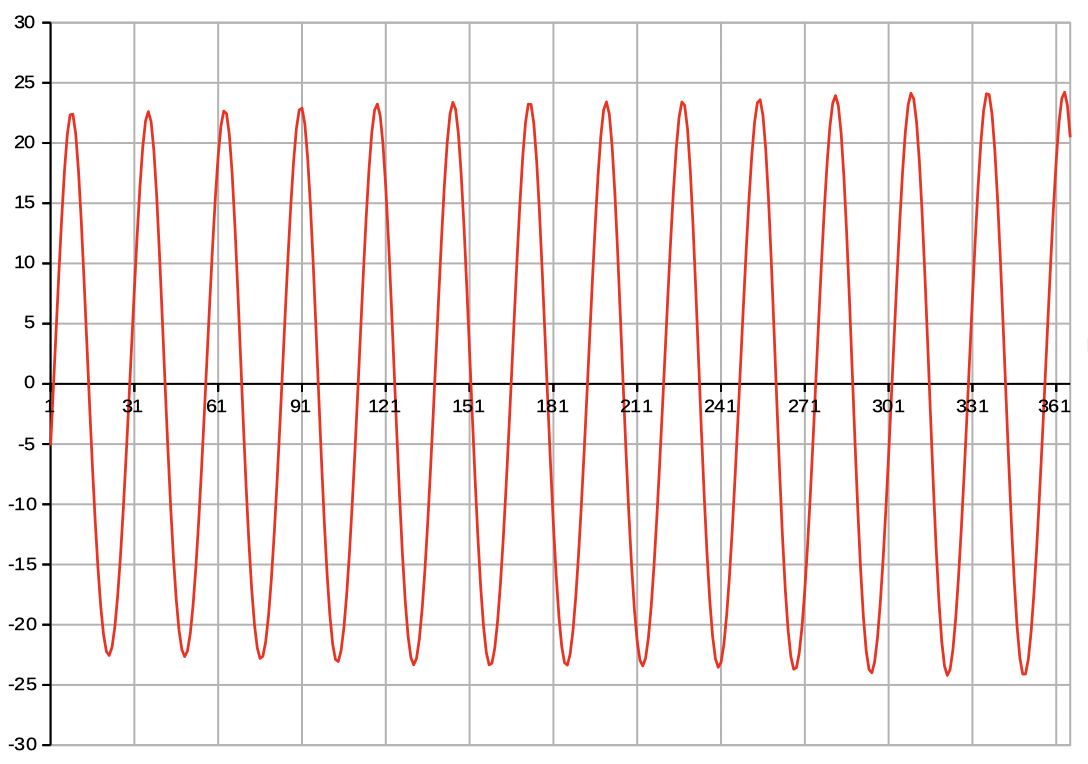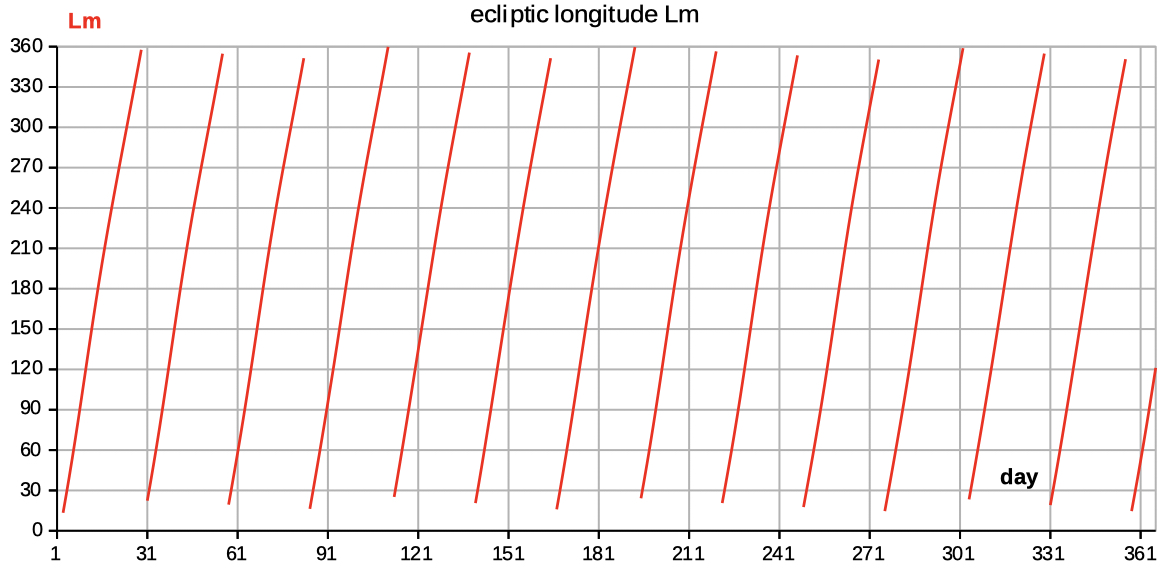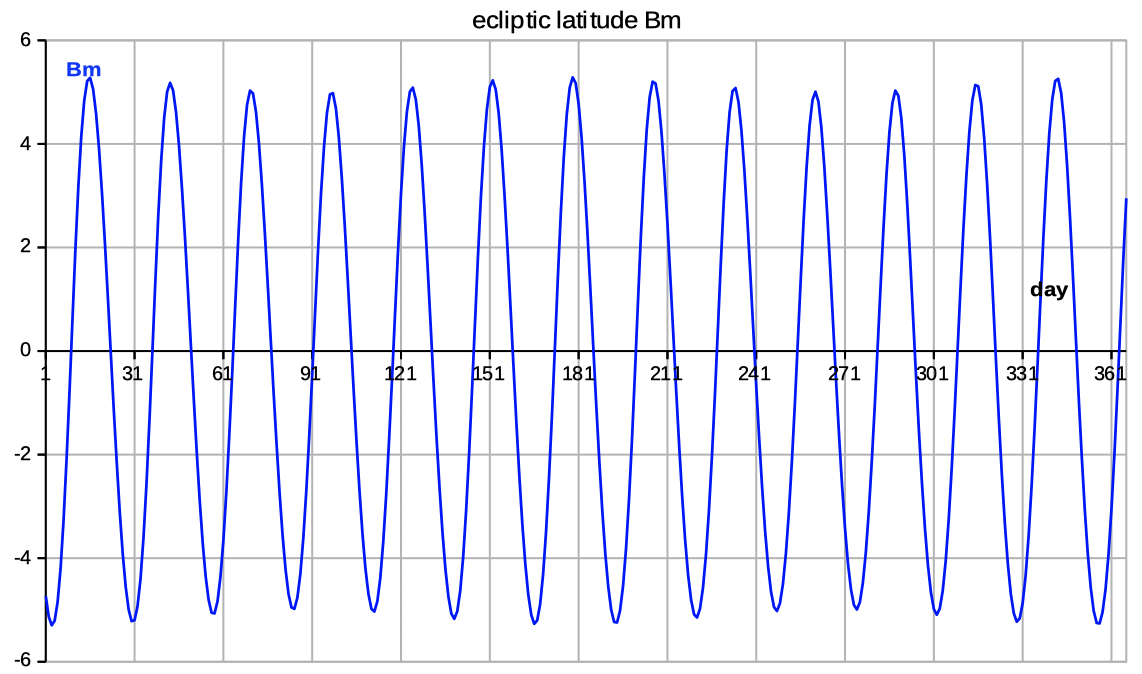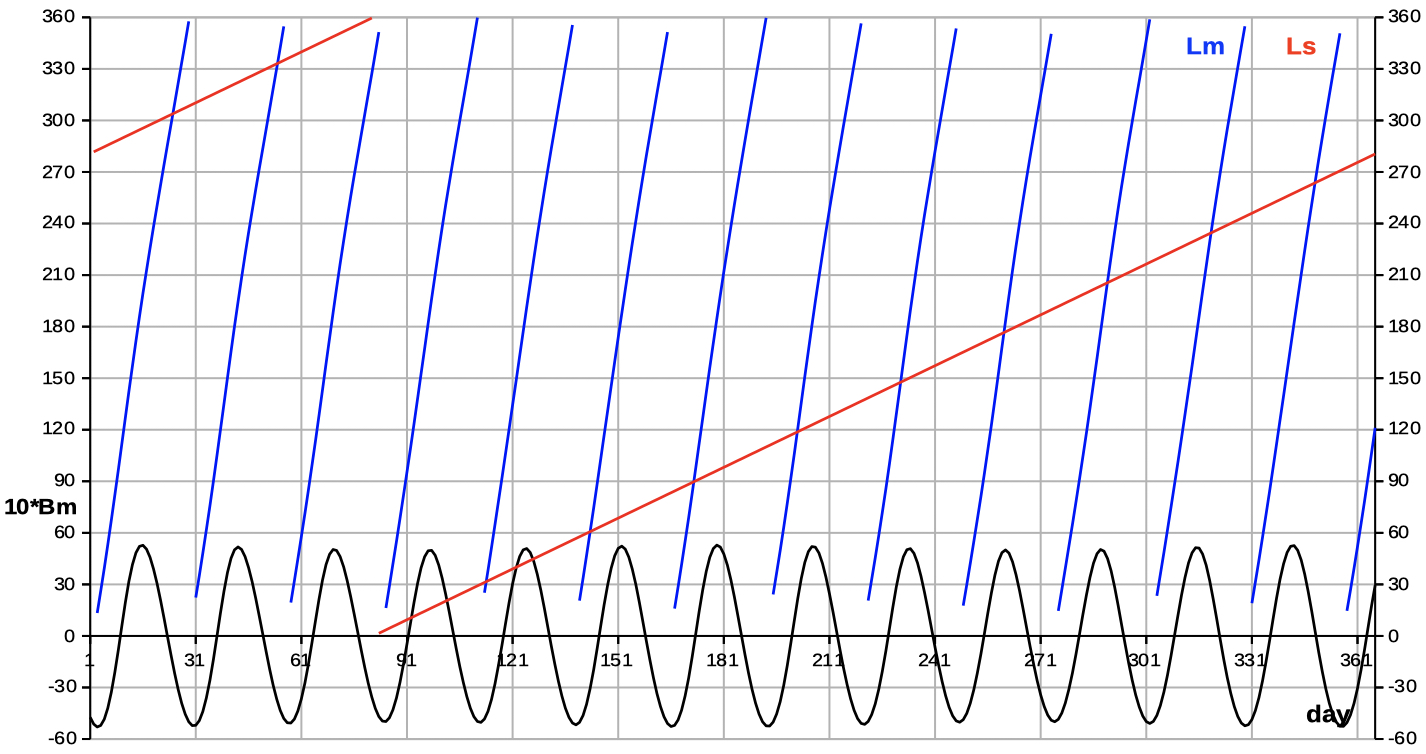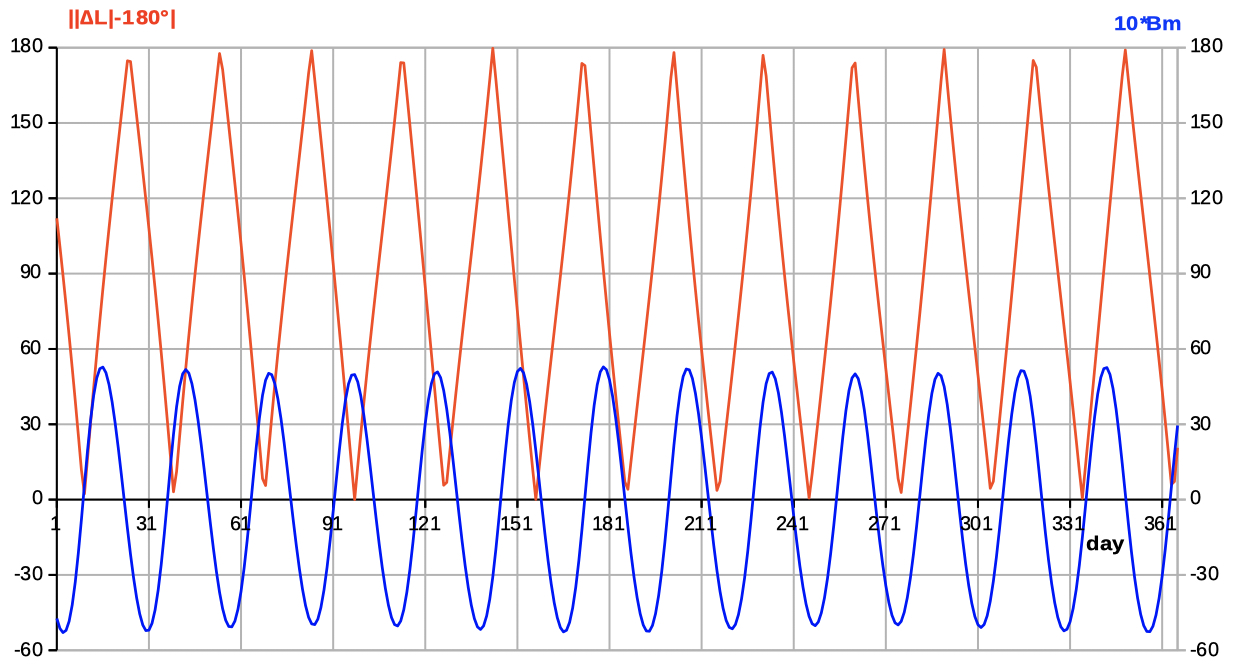start
the Moon for a month the Moon for a day
Position of the Moon by
Spreadsheet
for a year
| Select the table 'input': | |
|
Input (red frames): 1) hour UT, min |
 |
| The table 'calc' performs the calculations,
using a lot of auxiliary variables. Don't edit any
cell. Just ignore it. |
|
| Select 'elev az' to see data and diagrams of elevation and azimuth. | |
| Select 'illum' to see data and diagrams of the illuminated fraction. | |
| Select 'distance declin' to see data and diagrams of geocentric distance and declination. | |
| Select 'L B' to see data and diagrams of ecliptic longitude and latitude. | |
| Select 'sol ecl' to explore solar eclipses. | |
| Select 'lun ecl' to explore lunar eclipses. |
